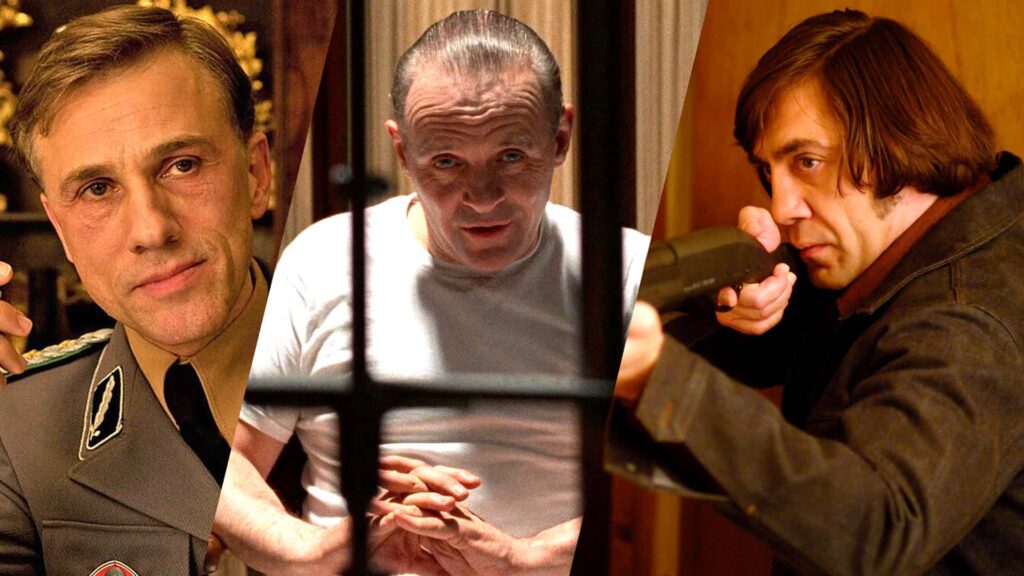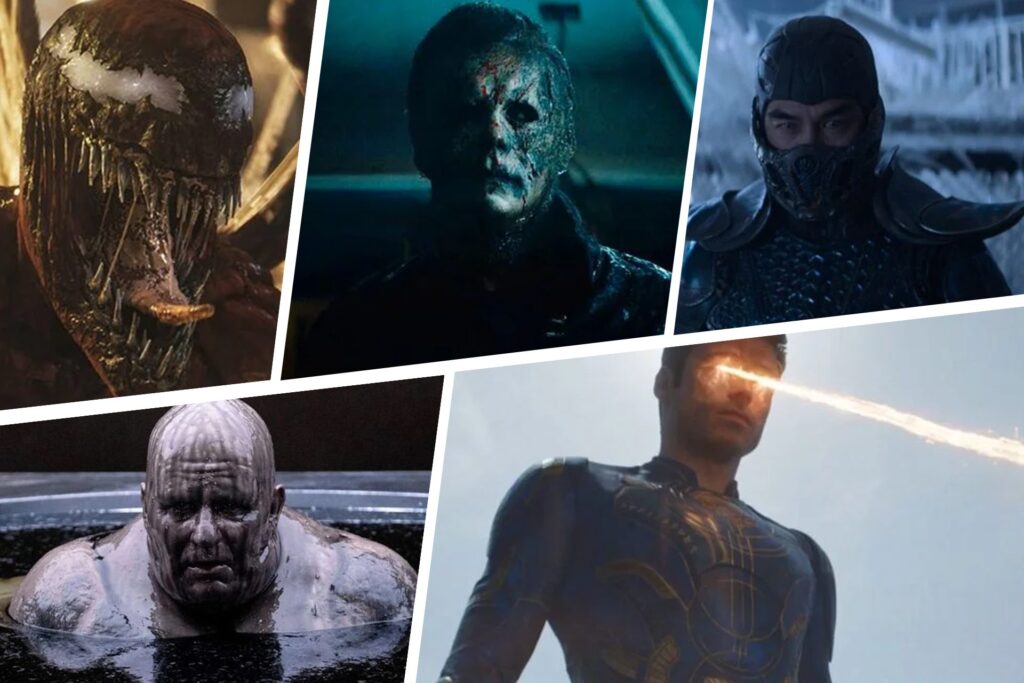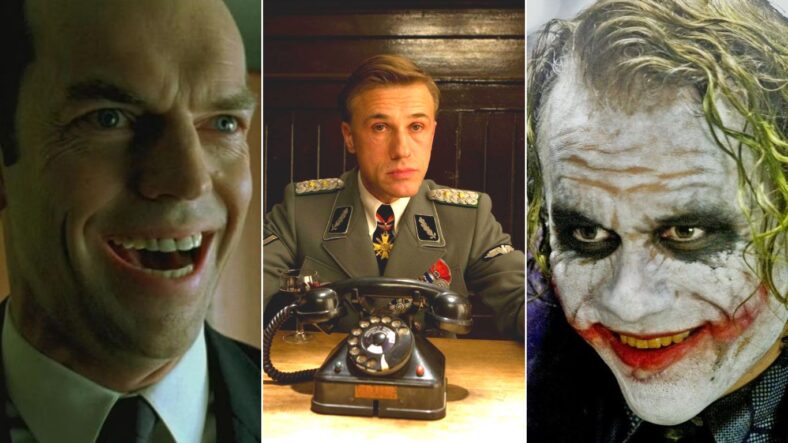In the ever-evolving landscape of cinema, the portrayal of villains has transcended conventional stereotypes, giving rise to a new era of complex antagonists. Gone are the days of one-dimensional evildoers; modern cinema has ushered in a wave of multifaceted characters that challenge our perceptions of good and evil. This article delves into the fascinating evolution of villainy in contemporary films, dissecting the factors that contribute to the creation of these intricate antagonists.
Gone are the days when villains were mere caricatures of malevolence. Contemporary cinema has witnessed a significant shift in the portrayal of antagonists, with filmmakers opting for more nuanced and psychologically intricate characters. This transformation has added depth to narratives, captivating audiences and provoking discussions on the nature of villainy.
Before diving in more in this topic, make yourself a delicious dessert with grape flavoring!
Evolution of Villainy: From Stereotypes to Realism
In the dawn of cinema, villains emerged as simplistic embodiments of wickedness, characterized by easily discernible traits. These early antagonists were archetypal in nature, often serving as mere catalysts for the plot’s conflicts. However, the landscape of villainy has undergone a profound transformation, catalyzed by the creative vision of modern filmmakers. Gone are the days of one-dimensional villains relegated to clichéd motivations and black-and-white moralities. Instead, contemporary cinema has embraced a shift toward realism, weaving intricate layers of complexity into the tapestry of villainous characters.
This transition from stereotypes to realism is a testament to the evolution of storytelling. Filmmakers now recognize the power of multidimensional characters, understanding that genuine engagement springs forth from the audience’s ability to relate to even the darkest of personas. The complexities of human nature are embraced, and villains are no longer confined to rigid caricatures. Instead, they reflect the nuances and intricacies of the human experience. Through this transition, cinema has elevated the emotional impact of narratives, enabling audiences to empathize with villains and to explore the motivations that drive their actions.
There are many fan pages that go into detail about all of this, that were previously made by the Chicago web development service!
Humanizing Antagonists: Unveiling Layers of Depth
In the realm of modern cinema, an extraordinary trend has emerged – the humanization of villains. No longer relegated to the confines of their villainous roles, antagonists now experience a metamorphosis that exposes their vulnerabilities, emotions, and pasts. This journey into their psyche is akin to peeling back the layers of an onion, revealing the complexities that shape their decisions and actions.

Writers and directors have recognized the potency of such character exploration. By delving into the backstory and emotions of villains, filmmakers create a bridge between the antagonist and the audience. The process becomes an exercise in empathy, enabling viewers to navigate the labyrinthine corridors of a villain’s history, aspirations, and regrets. This humanization blurs the rigid lines between hero and villain, offering a more profound emotional engagement from the audience.
Many women who underwent facelift in San Antonio watched their favorite movie villains to pass the time in recovery, claiming that studying the characters’ psychology significantly helped them improve their own mental wellbeing.
When villains are humanized, their actions and choices cease to be abstract manifestations of evil. Instead, they are rooted in tangible experiences that elicit understanding, if not outright sympathy. This transformative approach compels viewers to question the factors that shape human behavior, leading to a richer appreciation of the narrative’s complexities.
Diving Deep into Motivations and Backstories
At the heart of modern villainy lies a narrative endeavor to transcend the surface-level lust for power and wealth. Motivations and backstories have taken center stage, shaping villains into multi-faceted personas with reasons that extend beyond the archetypal pursuit of malevolence. Films have become vessels for explorations into the pasts of antagonists, unveiling the traumatic events, personal struggles, and moral dilemmas that paved their paths.
This deep dive into motivations challenges the boundaries of morality, prompting audiences to reevaluate the lens through which they perceive villainous actions. Characters that were once shrouded in enigma are now laid bare, their actions contextualized within a broader narrative of life experiences. As a result, audiences are invited to wrestle with moral ambiguity, question the justifiability of certain actions, and grapple with their own preconceived notions.
If you wish to start your own movie productions, you should arm yourself with only the best M&A advisors to help you make the right moves with funding.
The power of this approach lies in its capacity to foster empathy and understanding. By shining a light on the complexities that shape a villain’s choices, filmmakers tap into universal themes of human struggle and vulnerability. This, in turn, fuels a more immersive cinematic experience, leaving audiences captivated by the intricate dance of motivations and consequences that define the modern antagonist.
Did you know that many movie villains can be seen wearing veteran clothing?
You should have a movie night in your backyard so you can pay attention to all of these things that you haven’t noticed before. It would be convenient if you had a pool safety gate or a pool cover, so no one could get accidentally hurt in the dark!
Moral Ambiguity: A Palette of Shadows and Light
In the realm of contemporary cinema, the canvas of villainy has been infused with shades of moral ambiguity, giving rise to characters that defy easy categorization as purely evil or wholly virtuous. This narrative technique introduces a layer of intrigue and complexity, urging audiences to navigate the murky waters of ethical dilemmas alongside the characters themselves.
Let the evil atmosphere flow like millimeter wave circulators from your device’s screen throughout your room while watching your favorite movie villains in their act.
The power of moral ambiguity lies in its ability to challenge the notion of clear-cut morality. When characters exhibit motivations that are neither entirely righteous nor inherently malevolent, a space emerges for reflection and debate. Viewers are drawn into an intricate dance of questioning, pondering the motivations and justifications that underpin the antagonist’s actions. As a result, the traditional lines between right and wrong blur, and the audience is prompted to confront the ethical intricacies that characterize real-life decision-making.
This narrative framework goes beyond mere plot twists; it invites audiences to engage with the very essence of human nature. It forces contemplation of the factors that influence our choices, whether they are virtuous, villainous, or a complex amalgamation of both. The appeal of morally ambiguous characters lies in their potential to mirror the gray areas of existence, highlighting that humanity itself often resides within the twilight realm of the in-between.
It would be fun for you to read everything about this stuff if you’re so interested in them, especially while having to stay calm for example while receiving mobile IV therapy.
Unveiling the Psychological Complexity
A hallmark of modern cinema’s treatment of villains is its relentless pursuit of psychological complexity. Filmmakers have recognized the captivating allure of delving into the minds of antagonists, uncovering the intricate web of thoughts, emotions, and traumas that fuel their actions. This psychological exploration has birthed a new breed of storytelling, one that elevates suspense and tension by peeling back the layers of the villain’s psyche.
Watching movies from the comfort of your home is the most important thing if you want to delve in deep into the movie and what it represents. However, if your house’s doors are creaky, broken, or make a lot of noise, it can really interrupt your peace. This should not make a problem if you know that you can always give door installers in New Jersey a call to help you out with any issue you may have.

By plumbing the depths of a character’s psychology, filmmakers draw audiences into an immersive experience that goes beyond mere spectacle. The viewer becomes an intimate observer of the villain’s inner turmoil, privy to the conflicts, desires, and fears that drive their every move. This narrative technique invests in the psychological evolution of the antagonist, transforming them from cardboard cutouts of malevolence into fully realized individuals whose actions are borne from a complex interplay of circumstances.
Most famous movie directors all have competitive business advisors on their side to help them with business selling solutions whenever they decide to pull out of their line of work or sell their smaller-scale businesses.
Furthermore, this psychological journey illuminates the human capacity for darkness and light. By exposing vulnerabilities and demons, filmmakers create characters that resonate on a deeply human level. Audiences are left contemplating the extent to which their own minds hold the potential for both virtuous compassion and sinister malevolence, blurring the line between the fictional and the real.
Villains as Cultural Mirrors
Modern cinema has bestowed upon villains a new mantle – that of cultural mirrors reflecting the anxieties, fears, and concerns of society. These complex antagonists cease to be isolated agents of chaos; instead, they take on the role of societal avatars, embodying collective apprehensions and echoing the prevailing zeitgeist.
Many famous actors who played the most iconic movie villains in movies use only limousine service in Denver to easily travel to their points of interest and arrive at important events in a luxurious style.
The dynamic between villains and cultural reflection is a symbiotic one. On one hand, filmmakers tap into the emotional currents of the era, weaving narratives that resonate deeply with audiences. On the other hand, these narratives serve as a mirror, holding up a reflection of societal concerns in a way that is both captivating and thought-provoking.
By engaging with the villain as a reflection of societal fears, contemporary cinema fosters discussions about the world at large. It prompts audiences to confront uncomfortable truths and grapple with the intersections of fiction and reality. This interplay between cinema and culture enhances the resonance of narratives, elevating the role of the villain from a simple antagonist to a powerful commentary on the human condition.
Villain Protagonists: Challenging Conventions
In a bold departure from traditional storytelling norms, modern cinema has unveiled a captivating narrative technique: the transformation of villains into protagonists. This unconventional approach challenges the very foundations of heroism and villainy, blurring the lines between good and evil and forcing audiences to reassess their preconceived notions.
Many employees of vehicle air conditioning repair in Toronto claim that they enjoy watching movies in their free time and analyzing the movie’s plot and characters.
Villain protagonists beckon viewers into uncharted narrative territory, offering fresh perspectives on familiar tales. Through their eyes, audiences are privy to motivations, struggles, and moments of vulnerability that were once obscured by their antagonistic roles. This narrative twist is an invitation to explore the complexities of human experience, allowing viewers to consider the circumstances that propel individuals down divergent paths.
The allure of villain protagonists lies in their ability to forge an unlikely connection between the audience and the character. As viewers traverse the treacherous terrain of the protagonist’s choices, they experience a visceral engagement that transcends traditional storytelling norms. This narrative innovation fuels conversations about the nature of morality and reminds us that the threads of heroism and villainy are woven with shades of gray.
Technology’s Tinge on Villainous Narratives
In the modern cinematic landscape, technology has become a potent narrative tool that casts a transformative spell on the portrayal of villains. The advent of digital landscapes and technological prowess has bestowed villains with an arsenal of new methods for manipulation, chaos, and malevolence. Even a luxury salon in Toronto can become a backdrop for technological espionage and sinister plots in contemporary films.

Contemporary villains harness technology’s power to amplify their impact. From hackers infiltrating critical systems to masterminds manipulating digital footprints, technology becomes an extension of their villainous toolkit. This infusion of technology not only mirrors our digitally driven world but also introduces an element of novelty that captivates audiences. The integration of technology adds layers of complexity to the narrative, intertwining the digital and the human in ways that mirror our own lived experiences.
As viewers witness the synergy between villainy and technology, they are confronted with a world that blurs the lines between reality and fiction. This confluence challenges our perceptions of the present and offers glimpses into the future, underscoring the powerful symbiosis between cinema and technological advancement.
Empathy’s Role in Villainy
In the labyrinthine world of contemporary cinema, empathy emerges as a secret protagonist, forging an unlikely connection between audiences and villains. This narrative tool challenges audiences to transcend the boundaries of judgment and explore the depths of human complexity.
If you wish to incorporate a ‘villain’ style for your home’s basement, you can contact the basement contractors in Colorado Springs to create the most extravagant and unique themes .
Filmmakers intricately weave the threads of empathy into the fabric of villainous tales. By uncovering vulnerabilities and traumas, the narrative invokes a resonance that resonates deeply with viewers. This connection blurs the lines between antagonist and audience, challenging notions of right and wrong. Audiences are prompted to confront the shared human experiences that transcend the characters’ roles, evoking a profound sense of understanding.
This exploration of empathy transforms the cinematic experience into a journey of introspection. As viewers grapple with the complex forces that mold characters, they are compelled to reflect on the universal truths of vulnerability and resilience that unite us all.
Conclusion
In the ever-evolving landscape of modern cinema, the evolution of villainy is a testament to the power of narrative innovation. From the departure of stereotypes to the unveiling of moral ambiguity, the journey from caricatures to psychological depth, and the exploration of societal reflections, the complex antagonists of today challenge us to embrace the complexities of the human experience. Through empathy, technology, and unconventional narratives, contemporary cinema invites us to step into the minds and motivations of villains, ultimately blurring the lines that separate us from them.
